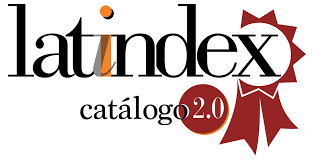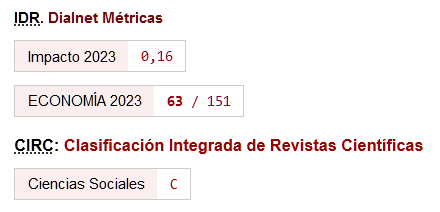The Decision of Listening to Recorded Music in Colombia. A Microeconometric Approach
DOI:
https://doi.org/10.46661/revmetodoscuanteconempresa.2251Keywords:
Música grabada, participación cultural, modelos probit, Colombia, recorded music, cultural participation, probit modelsAbstract
This paper purpose is to determine the variables that could influence the individual observable decision of listening to recorded music in Colombia. To do so, probit models are estimated using micro-data from the Encuesta de Consumo Cultural 2008 [Cultural Consumption Survey 2008 ]. Empirical results show that individuals with higher education that take cultural courses and workshops, and belong to medium and high socio-economic strata, are those with the highest probability of listening to recorded music. Additionally, self-identified individuals as African-Colombian-descendent present the lowest likelihood. This paper contributes to the scarce empirical literature
on the determinants of cultural participation in Latin America.
Downloads
References
Aguado, L. y Palma, L. (2012). “Una interpretación metodológica sobre la incorporación de los bienes y servicios culturales al análisis económico”. Lecturas de Economía, 77, pp. 219–252.
Aguado, L. y Palma, L. (2015). “Factores que limitan la participación cultural. Una mirada desde la economía de la cultura”. Revista de Ciencias Sociales, (XXI) 1, pp. 58–71.
Aguiar, M. y Hurst, E. (2006). Measuring trends in leisure: the allocation of time over five decades. Working Papers 06–2, Federal Reserve Bank of Boston.
Aguiar, M. y Hurst, E. (2007). “Measuring trends in leisure: the allocation of time over five decades”. The Quarterly Journal of Economics, (122)3, pp. 969–1006.
Ateca–Amestoy, V. (2009). “El capital humano como determinante del consumo cultural”. Estudios de Economía Aplicada, (27)1, pp. 87–110.
Balducci F. (2009). “Music or Hi–tech Lovers? Inferring into the Determinants of Music Consumption”. Rivista italiana degli economisti, 14(2), pp. 361–394.
Becker, G.S. (1965). “A theory of the allocation of time”. Economic Journal, (75), 299, pp. 493–517.
Borgonovi, F. (2004). “Performing Arts: An Economic Approach”. Applied Economics, (36)17, pp. 1871–1885.
Cameron, C. y Trivedi, P. (2005). Microeconometrics: methods and applications. New York: Cambridge University Press.
Chan, T. y Goldthorpe, J. (2010). “Social status and cultural consumption”, 1–27. En: T. Chan (ed.). Social Status and Cultural Consumption. Cambridge: Cambridge University Press.
Coulangeon, Ph. y Lemel, Y. (2007). “Is ‘distinction’ really outdated? Questioning the meaning of the omnivorization of musical taste in contemporary France”. Poetics, 35, pp. 93–111.
DANE (2008). Encuesta de Consumo Cultural 2008, Manual de Diligenciamiento y Conceptos Básicos. Departamento Administrativo Nacional de Estadística (DANE). Bogotá: DANE.
Dewenter, R., Haucap, J. y Wenzel, T. (2011). “On file Sharing with Indirect Network Effects Between Concert Ticket Sales and Music Recordings”. Dusseldorf Institute form Competition Economics, 28, pp. 1–18.
Favaro, D. y Frateschi, C. (2007). “A discrete choice model of consumption of cultural goods: The case of music”. Journal of Cultural Economics, (31)3, pp. 205–234.
Greene, W. y Hensher, D. (2010). Modeling Ordered Choices. A Primer. Cambridge: Cambridge Books, Cambridge University Press.
Igarza, R. (2009). Burbujas de ocio: Nuevas formas de consumo cultural. Buenos Aires: La Crujía Ediciones.
Levy–Garboua, L. y Montmarquette, C. (1996). “A microeconometric study of theatre demand”. Journal of Cultural Economics, 20, pp. 25–50.
Lévy–Garboua, L., and C. Montmarquette. 2003. “Demand”. In A handbook of Cultural Economics edited by R. Towse, pp. 201–213. Cheltenham: Edward Elgar.
Long, J. y Freese, J. (2001). Regression Models for Categorical Dependent Variables Using Stata. College Station: Stata Press.
Michael, R. y Becker, G.S. (1973). “On the new theory of consumer behavior”. Swedish Journal of Economics, (75)4, pp. 378–396.
Montoro–Pons, J. y Cuadrado–García, M. (2008). Legal origin and intellectual property rights: an empirical study in the prerecorded music sector. European Journal of Law and Economics, (26) 2, pp. 153–173.
Montoro–Pons, J. y Cuadrado–García, M. (2011). “Live and prerecorded popular music consumption”. Journal of Cultural Economics, (35)1, pp. 19–48.
Montoro–Pons, J., Cuadrado García, M. y Casasús–Estellés, T. (2013). “Analysing the popular music audience: determinants of participation and frequency of attendance”. International Journal of Music Business Research, (2)1, pp.35–62.
O'Hagan, J. y Zieba, M. (2010). “Output Characteristics and Other Determinants of Theatre attendance – An Econometric Analysis of German Data”. Applied Economics Quarterly, (56)2, pp.147–174.
Palma, M., Palma, L. y Aguado, L. (2013). “Determinants of cultural and popular celebration attendance: the case study of Seville Spring Fiestas”. Journal of Cultural Economics, (37)1, pp. 87–107.
Peterson, R. (2005). “Problems in comparative research: The example of omnivorousness”. Poetics, (33)5–6, 257–282.
Prieto–Rodríguez, J. y Fernández–Blanco, V. (2000) “Are Popular and classical music listeners the same people?”. Journal of Cultural Economics, (24)2, pp. 147–164.
Seaman, B. (2006). “The Relationship among Regional Economic Impact Models: Contingent Valuation versus Economic Impact in the Case of Cultural Assets”, Andrew Young School of Policy Studies Research Paper Series, pp. 07–05.
Stigler, G. y Becker, G.S. (1977). “De gustibus non est disputandum”, American Economic Review, (67)2, pp. 76–90.
Towse, R. (2010). A textbook of cultural economics. Cambridge: Cambridge University Press.
Towse, R., Ed. (2003). A Handbook of Cultural Economics. Cheltenham: Edward Elgar Publishing.
Wagner, T. y Hess, T. (2013). “It’s Not the Same” – Differences in the Consumption of Digital and Physical Music. Proceedings of the 21st European Conference on Information Systems (ECIS 2013). Utrecht: Netherlands.
Werck, K. y Heynels, B. (2007). “Programmatic Choices and the demand for theatre: the case of Flemish theatres”. Journal of Cultural Economics, (31)1, pp.25–41.
Withers, G. (1980). “Unbalanced growth and the demand for performing arts: An econometric analysis”. Southern Economic Journal, (46)3, pp. 735–742.
Zentner, A. (2006). Measuring the Effect of File Sharing on Music Purchases. The Journal of Law & Economics, (49)1, pp. 63–90.
Zieba, M. (2009). “Full–income and price elasticities of demand for German public Theatre”. Journal of Cultural Economics, (33)2, pp. 85–108.
Downloads
Published
How to Cite
Issue
Section
License
Copyright (c) 2016 Revista de Métodos Cuantitativos para la Economía y la Empresa

This work is licensed under a Creative Commons Attribution-ShareAlike 4.0 International License.
Submission of manuscripts implies that the work described has not been published before (except in the form of an abstract or as part of thesis), that it is not under consideration for publication elsewhere and that, in case of acceptance, the authors agree to automatic transfer of the copyright to the Journal for its publication and dissemination. Authors retain the authors' right to use and share the article according to a personal or instutional use or scholarly sharing purposes; in addition, they retain patent, trademark and other intellectual property rights (including research data).
All the articles are published in the Journal under the Creative Commons license CC-BY-SA (Attribution-ShareAlike). It is allowed a commercial use of the work (always including the author attribution) and other derivative works, which must be released under the same license as the original work.
Up to Volume 21, this Journal has been licensing the articles under the Creative Commons license CC-BY-SA 3.0 ES. Starting from Volume 22, the Creative Commons license CC-BY-SA 4.0 is used.










